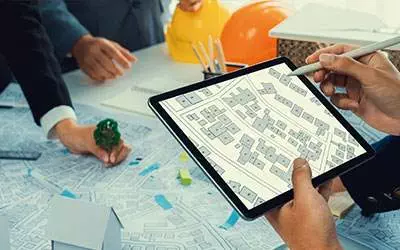Why investing in road, highway, and bridge inspections pays off

What are Road, Highway and Bridge Inspections?
Highway and bridge inspections are like giving our roads and bridges a regular check-up. They ensure that everything is in good shape so that we can all travel safely. For highways, this means looking for cracks in the pavement and potholes and making sure the signs and road markings are easy to see. When it comes to bridges, we check out the deck and beams and investigate the components that are underwater.
Why Are Road, Highway and Bridge Inspections Necessary?
Highway and bridge inspections are crucial because they keep our transportation networks safe and reliable. These inspections aren’t just about finding cracks or potholes—they’re about ensuring that the entire structure can handle the daily wear and tear of traffic, weather, and time. Regular inspections help us spot problems before they become serious, allowing for timely repairs that prevent accidents and costly disruptions.
- Prevents small issues from becoming major problems
- Identifies potential safety hazards before they lead to accidents
- Ensures the safety of drivers and passengers
- Helps extend the lifespan of roads and bridges
- Reduces the risk of costly emergency repairs
- Keeps traffic flowing smoothly with minimal disruptions
- Ensures compliance with safety regulations and standards
- Helps in planning and budgeting for future maintenance
- Protects the investment made in infrastructure
- Monitors environmental impacts like erosion and vegetation overgrowth
What Does Road, Highway and Bridge Inspection Include?
Road, highway and bridge inspections cover several important steps. First, we visually check the pavement, road signs, and markings for issues like cracks and potholes. We also inspect the structural elements of bridges and culverts to ensure they’re safe and functional. Safety features like guardrails, barriers, and lighting are evaluated next, along with checking the drainage systems and the surrounding environment.
ASI’s Field of Specialization: Highways and Bridges
At ASI, our expertise in roads, highways and bridges is all about keeping these vital structures safe, durable, and functional. We’re not just checking off boxes; we’re making sure that every road and every bridge we assess is ready to stand the test of time and traffic. Let’s dive into how we do it.
Road & Highway Inspections
When we inspect roads and highways, we start with the basics but never stop there.
- Visual Inspection: This is where we first get a feel for the road’s condition. We look at everything from the surface to the sidelines. Are there pavement cracks, potholes, or other signs of wear and tear? How’s the vegetation on the roadside—could it be a potential problem if left unchecked? We also check that all signage and road markings are clear and up to standard because a faded sign can be just as dangerous as a pothole.
- Structural Elements: We inspect them for cracks, corrosion, and alignment issues, making sure everything is as it should be. Safety doesn’t stop at the pavement, so we also evaluate guardrails and barriers to ensure they’ll do their job in an emergency.
- Safety Features: We ensure that all the lights and traffic signals are working properly because they guide drivers safely through various conditions. We also check drainage systems and utility enclosures, as poor drainage can lead to road damage or even accidents.
Environmental Considerations: We monitor vegetation to prevent overgrowth obstructing views or damaging roadways. Erosion control is another important step—we want to make sure that water runoff isn’t causing the ground to wear away beneath the road. - Documentation: After all this, we compile our findings into a comprehensive engineering report. This isn’t just a list of what’s wrong; it’s a detailed plan of action for what needs to be fixed to keep the highway safe and functional.
Bridge Inspections
Bridges require a whole different level of scrutiny. They’re the links connecting different parts of a road or highway system, and the consequences can be severe if something goes wrong.
- Visual Inspection: Just like with highways, we start with a visual inspection, but this time we’re focusing on the bridge’s deck, beams, and foundations. We’re looking for any signs of damage, from cracks to corrosion, that could compromise the bridge’s integrity. We also inspect expansion joints and mechanical components, which are crucial for the bridge’s flexibility and movement.
- Underwater Inspection: The inspection doesn’t stop at the waterline if a bridge spans water. We send specialists underwater to check the submerged components. This is vital because issues like corrosion or damage are often hidden beneath the surface.
- Load Rating Evaluation: How much traffic can the bridge safely handle now and in the future? We calculate the bridge’s capacity to ensure it can support current loads and any potential increases in traffic.
- Non-Destructive Testing (NDT): Sometimes, problems aren’t visible on the surface. That’s where NDT comes in. We use techniques like ultrasound, radiography, and magnetic particle testing to find hidden defects without damaging the structure. It’s like giving the bridge an X-ray to see what’s going on inside.
- Documentation: After the inspection, we prepare a detailed engineering report that includes everything we found and what we recommend to fix it. This isn’t just a one-off document; it’s a critical tool for planning future maintenance and ensuring the bridge stays safe and operational.
Closing note
Regular inspections help us catch problems early and keep things running smoothly.
Condition Assessments of Physical Assets
Condition assessments systematically evaluate an asset’s physical state and performance to ensure reliability, safety, and…
The Importance of Asset Management for Buildings
Building Condition Reports (BCR) and Climate Risk and Vulnerability Assessments (CRVA) are crucial for maintaining structures’ safety…
Experts in Municipal Decarbonization and Energy Reduction Strategies
The push for sustainability has never been more critical, especially for municipalities seeking to lower their carbon footprint…


